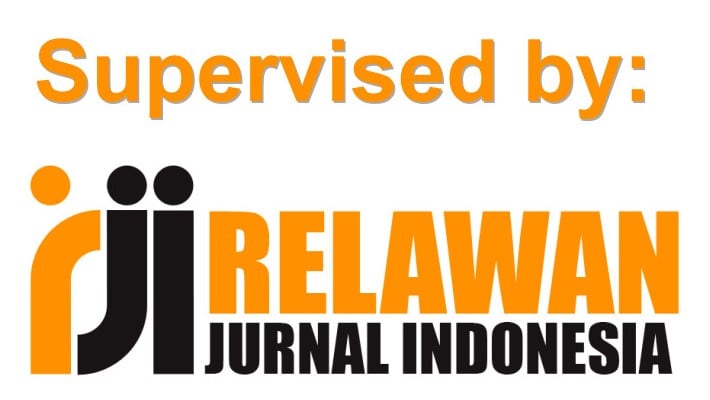Al-Haya’ Dalam Perspektif Psikologi Islam: Kajian Konsep Dan Empiris
DOI:
https://doi.org/10.18592/jsi.v8i2.3865Keywords:
Islam, Al-haya’ (malu), Psikologi, Al Haya, PsychologyAbstract
The phenomenon of the character of shame (al-haya’) is now very factual. The culture of shame slowly began to disappear with the global process of assimilation, the shameless character of the eastern culture began to adopt the character of western culture which resulted in the loss of shame. The impact of the loss of shame in a person is that all of his behavior is difficult to control and will commit a variety of dishonorable acts such as corruption, cheating, cheating, displaying the genitals with sexy and mini clothes, adultery, drunkenness, piracy, sexual harassment, murder and others. While Islam strongly emphasizes the character of shame as a good moral. This study aims to see how the concept of al-haya 'in the perspective of Islamic psychology through conceptual and empirical studies. The study in this study was carried out with two events namely, the first with a literature review and the second an empirical study. Literature studies include the study of the verses of the Koran, Hadith and opinions of Islamic leaders who discuss al-haya '. The second study is through an empirical way by conducting interviews with 2 Ustadz and 3 students majoring in Sufism and Psychotherapy who have successfully applied al-haya 'in their daily lives. This research is included in qualitative research with a grounded theory design. The results showed that al-haya 'which is interpreted by the research subjects is almost the same as what is contained in Islamic studies. Al-haya ’is a shame that is driven by respect and aversion to something that is seen as insulting or violating the principles of sharia. People who have the character of al-haya 'are those who want to do something deed but then undo their intentions because there are bad consequences that can reduce the dignity of himself in the eyes of respected peopleReferences
Al-Ghazali, I. (2008). Ringkasan Ihya'Ulumuddin. Akbar Media.
Al-Mishri, M. 2007. Menejemen Akhlak Salaf Membentuk Akhlak Seorang Muslim dalam Hal Amanah, Tawaddu’ dan Malu. Solo: Pustaka Arafah.
Al-Asfahani. (n.d.). Mu’jam mufradat alfaz al-Qur’an. Beirut: Dar al-Fikr.
Alsa, A. (2014). Pendekatan kuantitatif dan kualitatif serta kombinasinya dalam penelitian psikologi. Yogyakarta, Pustaka Pelajar.
Andayani, TR. 2008. Pendidikan Karakter: Berakar Pada Rasa Malu. Buku Proceedings Temu Ilmiah Nasional Ikatan Psikologi Perkembangan: Menata Karakter Bangsa. Bandung: Fakultas Psikologi Universitas Padjadjaran.
Aprilany, A. 2016. Fenomena “Jilbab Setengah Hari” Di Kalangan Mahasiswa. Skripsi Semarang: Universitas Negeri Semarang.
Arifin, I. Z. 2009. Bimbingan Penyuluhan Islam. Jakarta: Rajawali Pers.
Basalamah, R.N. 2014. Al-Haya Sebagai Solusi Bagi Permasalahan Moral Bangsa. Jurnal Raushan Fikr. Vol. 3. No. 2. 101-113.
Chirzin, M. (2011). Kamus pintar Al-Qur’an. Jakarta: Gramedia Pustaka Utama.
Coles, R. 2000. Menumbuhkan Kecerdasan Moral pada Anak. Jakarta: Gramedia Pustaka Utama
Deni Sultan bahtiar, Berjilbab dan tren buka aurat, (Yogyakarta : Mitra Pustaka, 2009 )
Hamka, M., dkk. 2016. Perilaku Seks Bebas Di Kalangan Remaja. Jurnal Psikologi, Vol. 12. No. 1. 2016. 58-69.
Kaawoan. 2015. Pemerkosaan Anak Kandung oleh Orang Tua dalam Pandangan Islam. Jurnal Irfani. Vol. 11. No. 1. 128-141.
Muhamad Hamka, H. Jamaluddin Hos, Megawati A. Tawulo. Jurnal Neo Societal • January 2016
Mujib, A. 2017. Kepribadian dalam Psikologi Islam, Jakarta: Raja Grafindo.
Nisa, K., & Rudianto. 2017. Tren Fashion Hijab Terhadap Konsep Diri Hijabers Komunitas Hijab Medan. Jurnal Interaksi, Vol. 1. No. 1. Januari 2017, 105-117.
Rahadi, D. S., & Indarjo, S. 2017. Perilaku Seks Bebas Pada Anggota Club Motor X Kota Semarang Tahun 2017. Jurnal of Health Education. Vol 2. No.2 115-121.
Riano, D. T. 2018. Buka-Tutup Jilbab di Kalangan Remaja. Jurnal Sosiologi FISIP Universitas Airlangga, Vol. 3, No.1, 1-20.
Risnayanti, B., & Cangara, H., 2011. Jilbab Sebagai Simbol Komunikasi Di Kalangan Mahasiswa Universitas Hasanudin. Jurnal Komunikasi KAREBA. Vol. 1 No. 2, 149-176.
Suprayogo, I. 2015. Tatkala Rasa Malu Telah Hilang, https://uin-malang.ac.id/r/151001/tatkala-rasa-malu-telah-hilang.html tanggal 02 Juli 2019
Shahîh: HR. Al-Hâkim (I/22), ath-Thabrâni dalam al-Mu’jâmush Shaghîr (I/223), al-Mundziri dalam at-Targhîb wat Tarhîb (no. 3827), Abû Nu’aim dalam Hilyatul Auliyâ’ (IV/328, no. 5741), dan selainnya. Lihat Shahîh al-Jâmi’ish Shaghîr (no. 3200).
Shahîh: HR.Abû Dawud (no. 4012), an-Nasâ-i (I/200), dan Ahmad (IV/224) dari Ya’la.
Shahîh: HR.al-Bukhâri (no. 6117) dan Muslim (no. 37/60)
Trianingsih, R. W., dkk. 2015. Faktor-faktor yang Berpengaruh terhadap Praktik Seks Pranikah padaRemaja di SMA Dekat Lokalisasi di Wilayah Kabupaten Malang. Jurnal Promosi Kesehatan Indonesia Vol. 10 / No. 2 / Agustus 2015. 160-172.
Downloads
Published
How to Cite
Issue
Section
License
Authors who publish with this journal agree to the following terms:
- Authors retain copyright and grant the journal right of first publication with the work simultaneously licensed under a Creative Commons Attribution License that allows others to share the work with an acknowledgment of the work's authorship and initial publication in this journal.
- Authors can enter into separate, additional contractual arrangements for the non-exclusive distribution of the journal's published version of the work (e.g., post it to an institutional repository or edit it in a book), with an acknowledgment of its initial publication in this journal.
- Authors are permitted and encouraged to post their work online (e.g., in institutional repositories or on their website) before and during the submission process, as it can lead to productive exchanges, as well as earlier and greater citation of published work (See The Effect of Open Access).





















